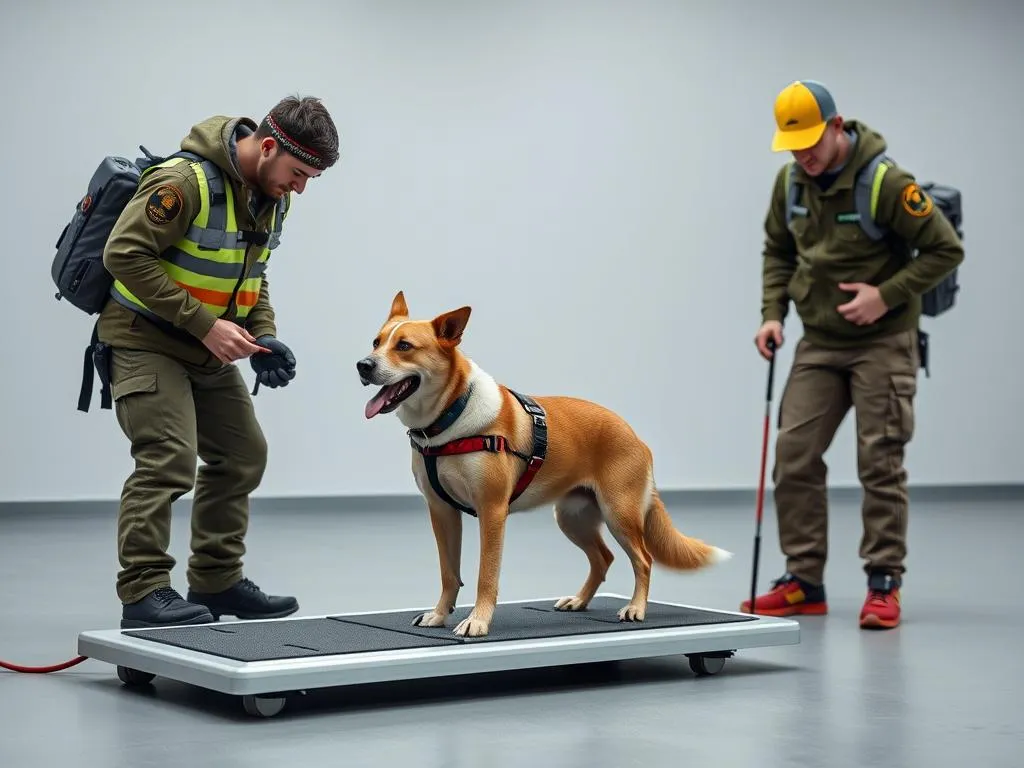
Introduction
Dog platform training is a specialized approach that utilizes a designated surface for training dogs. This method not only serves as a physical boundary but also enhances the dog-owner relationship through improved communication and understanding. As dogs learn to associate the platform with positive experiences, they gain confidence and improve their impulse control and focus.
The benefits of platform training are numerous. It fosters a stronger bond between you and your dog, encourages effective communication, and provides a framework for teaching various commands and tricks. Throughout this article, we will delve into the intricacies of platform training, covering everything from its basics to advanced techniques.
Understanding the Basics of Dog Training
Key Principles of Dog Training
At the heart of effective dog platform training is the concept of positive reinforcement. This principle emphasizes rewarding desired behaviors rather than punishing unwanted ones. By using treats, praise, or play, you can encourage your dog to repeat good behaviors. Timing is crucial in this process; rewards should be given immediately after the desired action to create a clear connection.
Consistency is also vital in dog training. Establishing a routine helps dogs understand what is expected of them. When using a platform, being consistent in commands and rewards will reinforce the behavior you want to instill.
Different Training Methods
There are various training methods available, each with its own strengths. Clicker training is one popular technique that uses a sound to mark desired behaviors, followed by a reward. Leash training focuses on teaching dogs to walk politely beside their owners. Dog platform training can complement these methods by offering a structured environment where commands can be practiced effectively.
When compared to other training styles, platform training stands out due to its emphasis on spatial awareness and positional commands. It teaches dogs to understand boundaries while maintaining focus on their handler.
What is a Dog Training Platform?
Definition and Purpose
A training platform is a defined space that provides a surface for dogs to learn and perform specific behaviors. It serves as a designated area where dogs can feel secure and focused. Platforms can be used for various training purposes, such as teaching commands, practicing tricks, or working on impulse control.
Types of Training Platforms
There are several types of training platforms available on the market. They can be made from different materials, such as wood, plastic, or foam, with varying designs. Some platforms are adjustable in height, allowing for customization based on the dog’s size and skill level. Additionally, platforms can be portable or permanent; portable options are great for training on the go, while permanent ones can offer stability for ongoing training sessions.
Setting Up for Dog Platform Training
Choosing the Right Platform
Selecting the appropriate platform is crucial for a successful training experience. Consider factors such as size—ensuring the platform is large enough for your dog to stand comfortably—and texture, which can influence your dog’s willingness to use it. Stability is also essential; a sturdy platform will prevent accidents and provide a safe training environment.
Creating a Training Environment
The setting in which you conduct dog platform training significantly impacts its effectiveness. Choose a location that is quiet and free from distractions. This helps your dog focus on the training session. Additionally, ensure safety by removing any potential hazards and creating a comfortable space for your dog to train.
Gathering Training Tools
Before you begin training, gather essential tools to facilitate the process. Items such as leashes, treats, clickers, and toys can enhance the experience. Having everything prepared in advance will allow you to maintain focus during training sessions.
Starting Dog Platform Training
Introduction to the Platform
Introducing your dog to the platform is the first step in dog platform training. Start by placing the platform in a familiar environment and allowing your dog to explore it at their own pace. Use treats and toys to engage your dog’s interest and encourage them to step onto the platform. It’s essential to create a positive association with the platform.
Basic Commands and Positioning
Once your dog is comfortable with the platform, you can begin teaching the “place” command. Use a clear and consistent cue, and reward your dog when they step onto the platform. Gradually guide them into the proper positioning, ensuring they understand where to stand or sit.
Gradual Progression
As your dog becomes more comfortable with the platform, you can gradually increase the difficulty of the training. Start by extending the duration they remain on the platform and introducing distance and distractions. This progression will help reinforce their training and develop their focus over time.
Intermediate and Advanced Platform Training Techniques
Adding Commands and Tricks
Once your dog has a solid grasp of the basic commands, you can expand their skill set by adding new commands and tricks. For example, you can teach your dog to jump on and off the platform or spin in place. Use positive reinforcement to reward these behaviors, making the learning process enjoyable.
Incorporating Agility and Obstacle Courses
Dog platform training can also be integrated into agility training. Create obstacle courses that include the platform as a key component. This can enhance your dog’s physical abilities while reinforcing their training. Incorporating agility challenges will keep the training sessions exciting and fun, encouraging your dog to engage actively.
Troubleshooting Common Issues
Addressing Resistance or Fear
It is not uncommon for some dogs to show resistance or fear towards the training platform. If your dog is hesitant, take a step back and allow them to explore the platform without pressure. Use treats to create a positive association, and gradually encourage them to step onto the platform at their own pace.
Dealing with Distractions
Distractions can be a significant challenge during training sessions. To help your dog stay focused, begin training in a low-distraction environment. As they become more proficient, gradually introduce distractions, rewarding them for maintaining focus. This will help improve their concentration and reinforce their training.
Adjusting Training Techniques
Sometimes, you may need to modify your approach based on your dog’s behavior. If a particular technique isn’t yielding the desired results, don’t hesitate to adjust your training style. This could involve changing the rewards offered or altering the commands used. Flexibility in your training approach can lead to better outcomes.
Benefits of Dog Platform Training
Enhanced Communication
One of the most significant advantages of dog platform training is the improvement in communication between dog and owner. This method fosters a mutual understanding of cues and commands, creating a more harmonious relationship. As dogs learn to respond to specific commands on the platform, they become more attuned to their owner’s expectations.
Behavioral Improvement
Dog platform training can have a positive impact on common behavioral issues, such as excessive barking or jumping. By providing a structured environment for training, dogs can learn appropriate behaviors and develop better self-control. Over time, you may notice a reduction in unwanted behaviors as your dog becomes more focused and disciplined.
Confidence Building
Building a dog’s confidence is another essential benefit of platform training. As dogs master new commands and tricks on the platform, they gain a sense of accomplishment. This boost in self-esteem can translate into improved behavior in other areas of their life, making them more well-rounded companions.
Conclusion
In summary, dog platform training offers a unique and effective approach to dog training that enhances communication, builds confidence, and improves behavior. By understanding the principles of dog training, selecting the right platform, and employing effective techniques, you can create a rewarding training experience for both you and your dog.
Encouraging pet owners to explore dog platform training can lead to stronger bonds and happier pets. By dedicating time to this method, both dogs and owners can enjoy the many benefits that come from improved training and communication.









